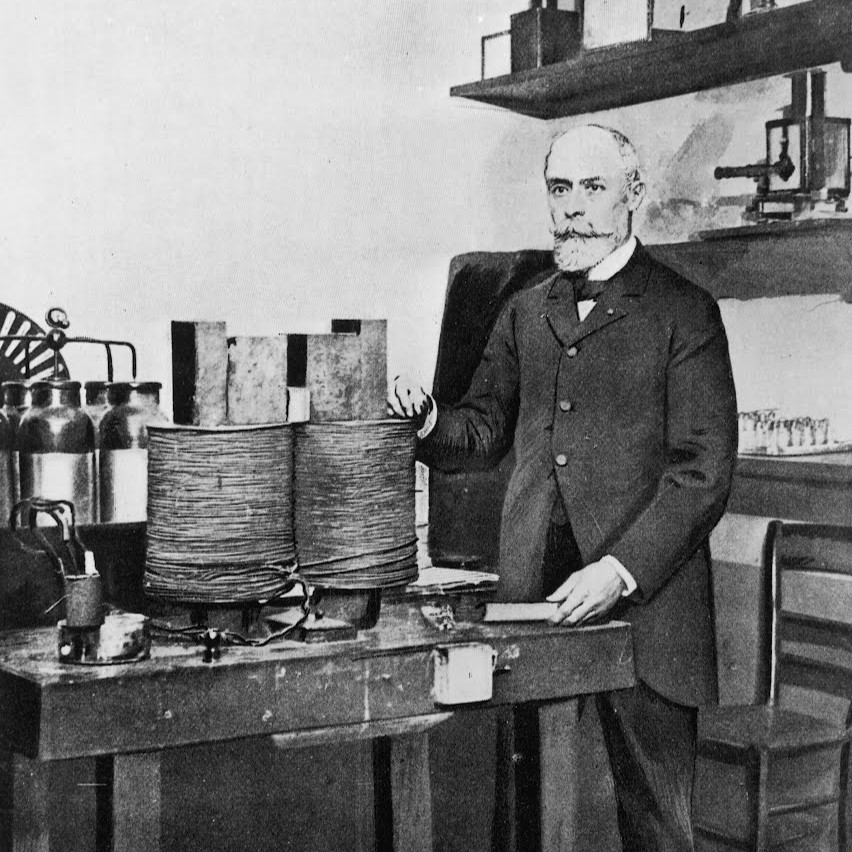Who is Henri Becquerel?
French physicist, discoverer of radioactivity. Let's get to know more closely:

Henri's father, Alexander Edmond Becquerel, was a professor of applied physics at the Natural History Museum in Paris. Continuing the family tradition, Henri Becquerel started the École Polytechnique in 1872 and was awarded his doctorate in physics in 1888. Between 1878 and 1892, he worked as an assistant and later as a professor at the Paris Natural History Museum. In 1895 he took up a position as a professor of physics at the École Polytechnique.
He has been awarded many honors and memberships of various academic societies around the world. He was awarded the Nobel Prize in Physics in 1903 along with Pierre and Marie Curie.
Henri Becquerel knew that when some materials are exposed to light, their surfaces begin to glow. To find out if these substances emit X-rays, he wrapped a photosensitive glass plate, formerly used as a photographic film, in opaque black paper. He placed uranium salt on top of this paper and left it to the sun to be stimulated by light. A few days later he opened the black papers and saw that the sensitive glass, which was impossible to get sunlight, had darkened. The uranium salt was excited by light and emitted a beam that passed through the paper and impacted the photographic glass.
Although Becquerel wanted to repeat the same experiment, he could not find the sunny weather he was looking for due to the consecutive rains. The black paper-wrapped film that Becquerel prepared for the experiment and the uranium compound placed on top of it stayed in his drawer for several days. On March 1, 1896, Becquerel developed the film that had been in the drawer for days, and found that the uranium crystal left its mark on the film even though it was not exposed to sunlight. Becquerel described it as an invisible ray similar to X-rays.
Becquerel read this result to the French Academy of Sciences as a paper on March 2, 1896. The rays in question were called Becquerel rays until 1898. In 1898, Marie Curie replaced the term with the more general name radioactivity.
Becquerel pointed out that after this discovery, the newly prepared uranium partially disappeared after a certain period of time and gained radioactivity. This observation would be called radioactive decay by Ernest Rutherford and Frederick Soddy in 1990.
Becquerel was the first person to notice the diseases caused by radioactive substances, by declaring that the radium he carried in his pocket caused a burn in his body in 1901.
A new energy source
After a while, Marie and Pierre Curie detected this radiation also in the element thorium and found the presence of radioactive elements such as radium and polonium. The natural radioactivity that Becquerel found was the birth of nuclear energy, a new energy source more powerful than any energy source known to date. Moreover, as Becquerel determined with his studies, an element that lost its radioactivity could regain this property after it had lost its radioactivity.
The spontaneous emission of rays by atoms without any external stimulation was a groundbreaking event in physics and the modern world. Radioactive radiation and radioactive transformation first paved the way for the discovery of new elements and then artificial radioactivity, marking the beginning of nuclear physics.
He died on August 25, 1908, in Le Croisic, France. After his death, the unit of radioactivity in the International System of Measurement was given the name Bekerel (also called Becquerel or Bq). In addition, two craters, one on the Moon and the other on Mars, are called the Becquerel crater.
